The Pancha Bhoota Sthalams are a group of five ancient Hindu temples in South India, each dedicated to one of the five primary elements of nature: Earth, Water, Fire, Air, and Ether. These temples hold immense religious, cultural, and historical significance, serving as a testament to the deep-rooted connection between human spirituality and the elements that sustain life. In this comprehensive exploration, we will delve into the mystical world of the Pancha Bhoota Sthalams, uncovering their unique attributes, legends, and the spiritual journey they offer to pilgrims.
Jambukeshwarar Temple (Water Element) – Thiruvanaikaval
The Jambukeshwarar Temple in Thiruvanaikaval, Trichy, Tamil Nadu, represents the Water element (Appu). Here, Lord Shiva is worshipped as Jambukeshwarar in the form of Appu Lingam.
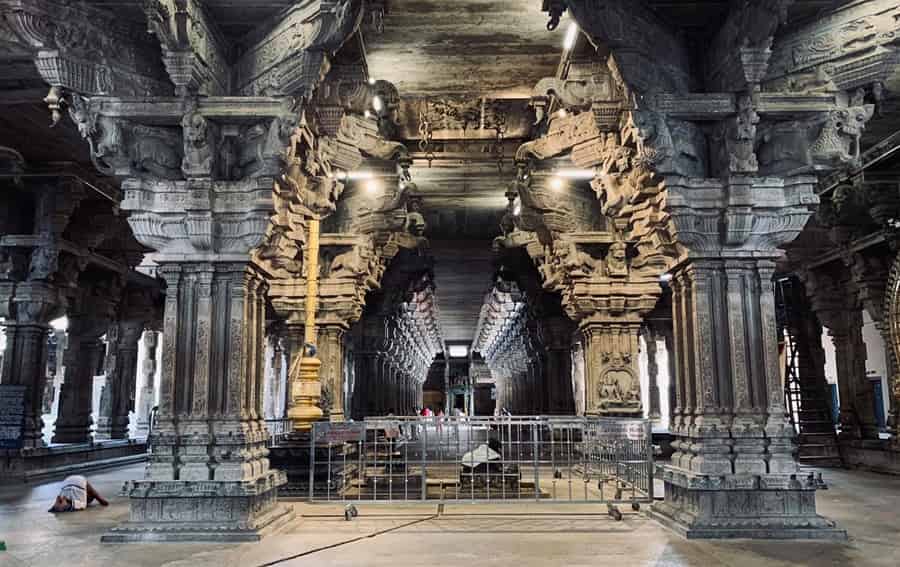
Key Features
- The temple is around 1800 years old and was built by Kocenganna Chola.
- It is the thirteenth largest temple in India, spread over 18 acres.
- The Uchi Kala Pooja, where priests dress up as women, representing Goddess Parvathi, is a daily ritual attended by many pilgrims.
- The stream of water below the Appu Lingam never dries up.
Legends
- Goddess Parvathi as Akhilandeshwari made a Lingam out of water and worshipped it here. Lord Shiva appeared to her and taught her the Shiva Gnana (the ultimate knowledge).
- The Shivaratri celebrations of Girija Kalyanam (the wedding of Shiva and Parvathi) are not conducted here, reflecting their unique Guru-disciple relationship.
Spiritual Significance
- Worship at this temple is believed to bestow wisdom and intelligence.
Ekambareswarar Temple (Earth Element) – Kanchipuram
The Ekambareswarar Temple in Kanchipuram, Tamil Nadu, represents the Earth element (Prithvi). Lord Shiva is worshipped here as Ekambaranathar and Ekambareshwar, represented by a Lingam made out of sand, known as Prithvi Lingam.
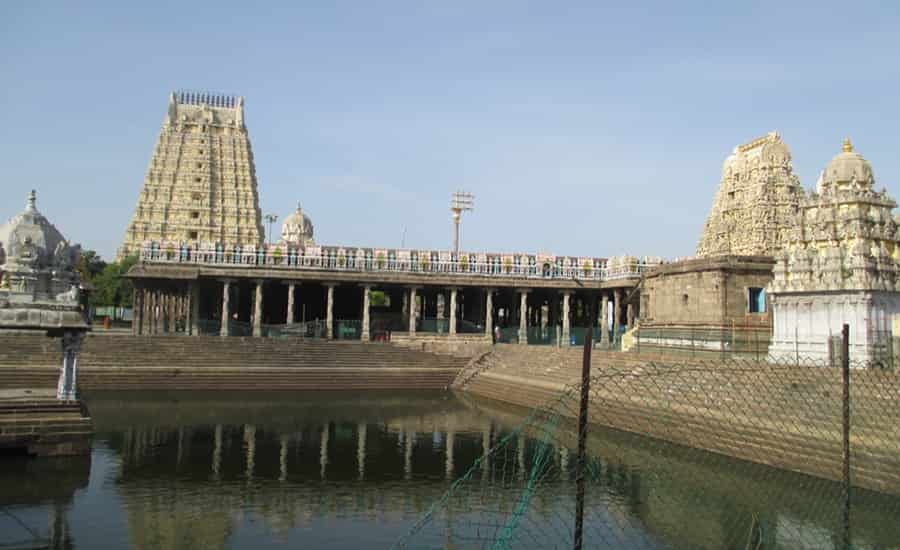
Key Features
- The temple is the tenth largest in India, spread over 23 acres.
- It has one of the tallest Gopurams (monumental ornate gateway tower) in South India, at 190 feet.
- The temple’s history dates back to at least 600 AD, making it one of the most ancient in India.
- A 3000-year-old mango tree inside the temple is said to have four different types of leaves, representing the four Vedas.
- Various kings have contributed to the temple’s architecture over the centuries.
Legends
- Goddess Parvathi performed penance under a mango tree. To test her devotion, Lord Shiva sent the river Ganga to disrupt her penance. Parvathi made a Shiva Lingam from the sand near the mango tree and consecrated it.
- The Abhishekam (ritual bathing) of the sand-made Lingam is done with jasmine oil to prevent its deterioration.
Spiritual Significance
- One does not need special idols or sculptures to enshrine God, but just a fistful of sand with all of one’s devotion.
Arunachaleswarar Temple (Fire Element) – Thiruvannamalai
The Arunachaleswarar Temple in Thiruvannamalai, Tamil Nadu, represents the Fire element (Agni). Lord Shiva is worshipped here as Arunachaleswarar in the form of Agni Lingam.
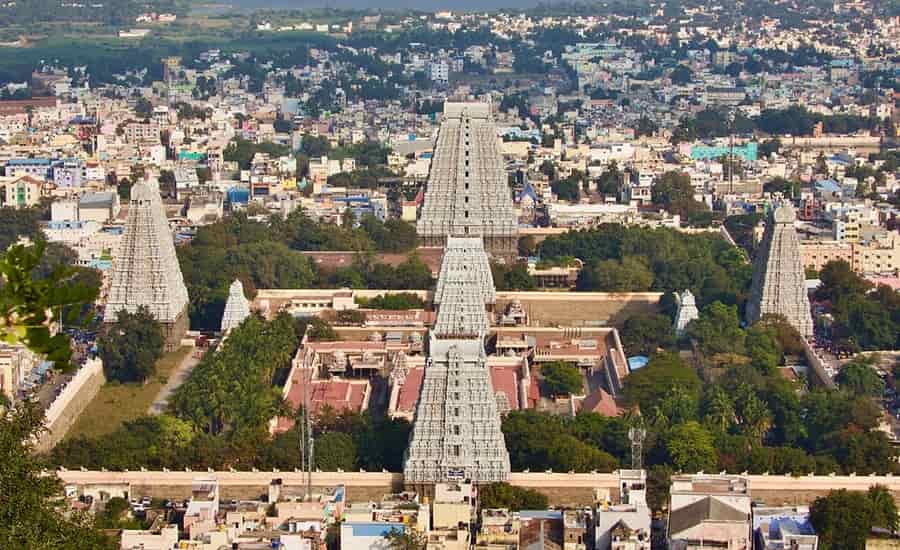
Key Features
- The largest temple in the world dedicated to Lord Shiva, covering 24 acres.
- The temple has a history dating back thousands of years and is mentioned in sacred Tamil scriptures.
- Every full moon, thousands of pilgrims perform Girivalam, a 14-km long circumambulation of the Arunachala hill, believed to wash away sins and fulfil desires.
- The Rajagopuram, the highest tower, is 217 feet tall and the third largest in India.
Legends
- Goddess Parvathi closed Shiva’s eyes playfully, causing a blackout in the universe. Upon penance by His devotees, Shiva appeared as a column of fire on the Annamalai hill.
- To determine superiority, Shiva appeared as a flame. Brahma and Vishnu failed to find its source. Brahma lied about finding the pinnacle, and Shiva ordained that Brahma would never have temples on Earth.
Spiritual Significance
- Worshipping, chanting, and remembering the Divine brings purity into our lives, minds, and hearts.
Kalahastheeswarar Temple (Air Element) – Srikalahasti
The Kalahastheeshwara Temple in Srikalahasti, Andhra Pradesh, represents the Air element (Vayu). Lord Shiva is worshipped here as Kalahastheeshwara in the form of Vayu Lingam.
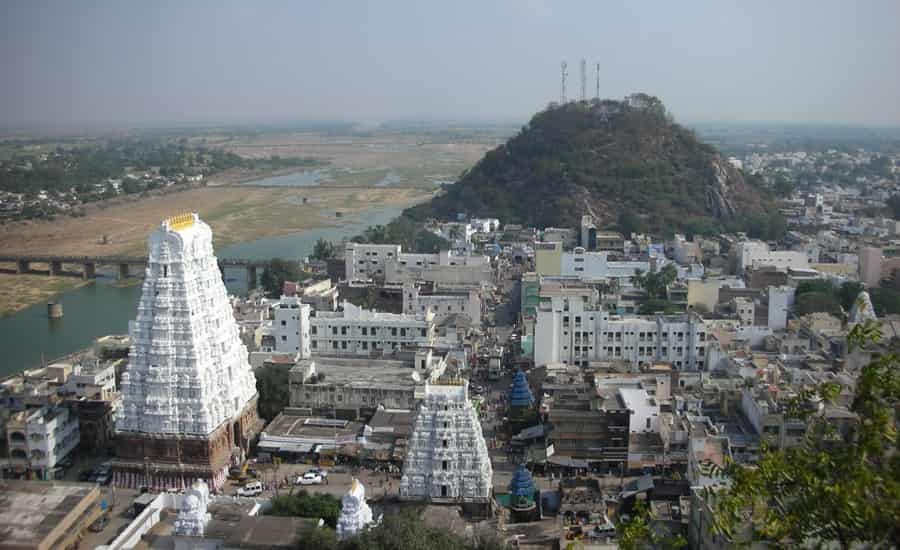
Key Features
- The initial structure was constructed in the 5th century.
- The main Gopuram, 120 feet high, was built in 1516 AD by the Vijaynagar King Krishnadevaraya.
- The temple is famous for Rahu-Kethu poojas, believed to ward off ill-effects of planetary movements.
- Priests never touch the Vayu Lingam with their hands.
Legends
- Srikalahasti is named after Sri (a spider), Kala (a snake), and Hasti (an elephant), who achieved moksha by worshipping Lord Shiva here.
- A lamp inside the inner sanctum flickers constantly, despite no air movement.
Spiritual Significance
- Worshipping the Air element symbolizes worshipping the Shiva Tattva present in all living beings.
Thillai Nataraja Temple (Ether/Space Element) – Chidambaram
The Thillai Nataraja Temple in Chidambaram, Tamil Nadu, represents the Ether (Akasha) element. Lord Shiva is worshipped here as Nataraja, the cosmic dancer.
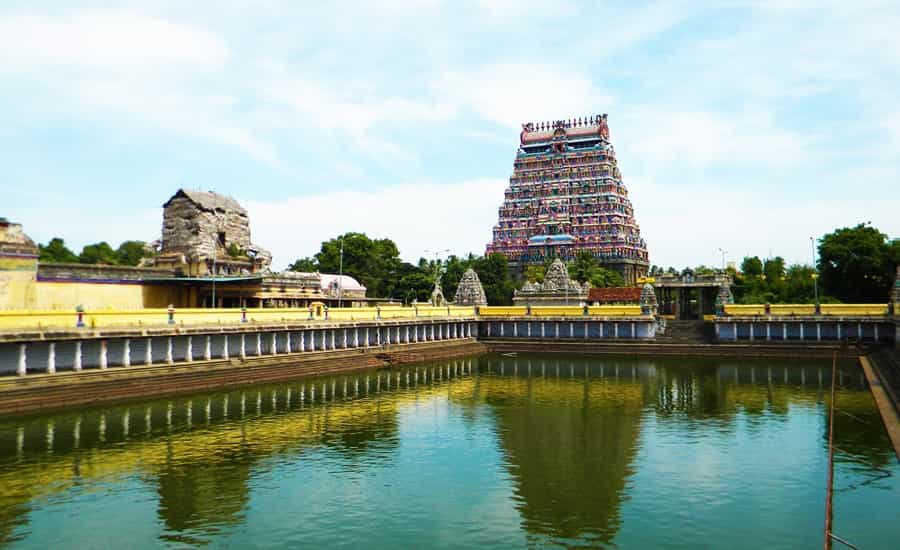
Key Features
- The fifth largest temple in India, spread over 40 acres.
- The Gopuram has a gold-plated roof by the Chola King Parantaka.
- The temple worships Lord Shiva in an anthropomorphic form, as a crystal Lingam, and in His formless form represented by an empty room.
- The Chidambara Rahasya symbolizes the ultimate divine secret, where the removal of the curtain reveals an empty space, representing the formless state of Lord Shiva.
Legends
- Lord Shiva performed the Ananda Tandava (dance of eternal bliss) in Chidambaram, symbolizing the continuous cycle of creation and destruction.
- The Chidambara Rahasya represents the moment when one, in total surrender, allows God to remove ignorance and experience ultimate bliss.
Spiritual Significance
- The temple symbolizes the path spiritual seekers need to take to attain the ultimate divinity.
Also Reads on:

 Call
Call WhatsApp
WhatsApp Enquiry
Enquiry
Very informative blissfully! Pictures are revealing divinity! Om Namah Shivaya
There is a correction in information in last picture, kindly refer space is given instead of water, instead of Thiruvanaikkaval, Chidambaram is given kindly refer please
corrected